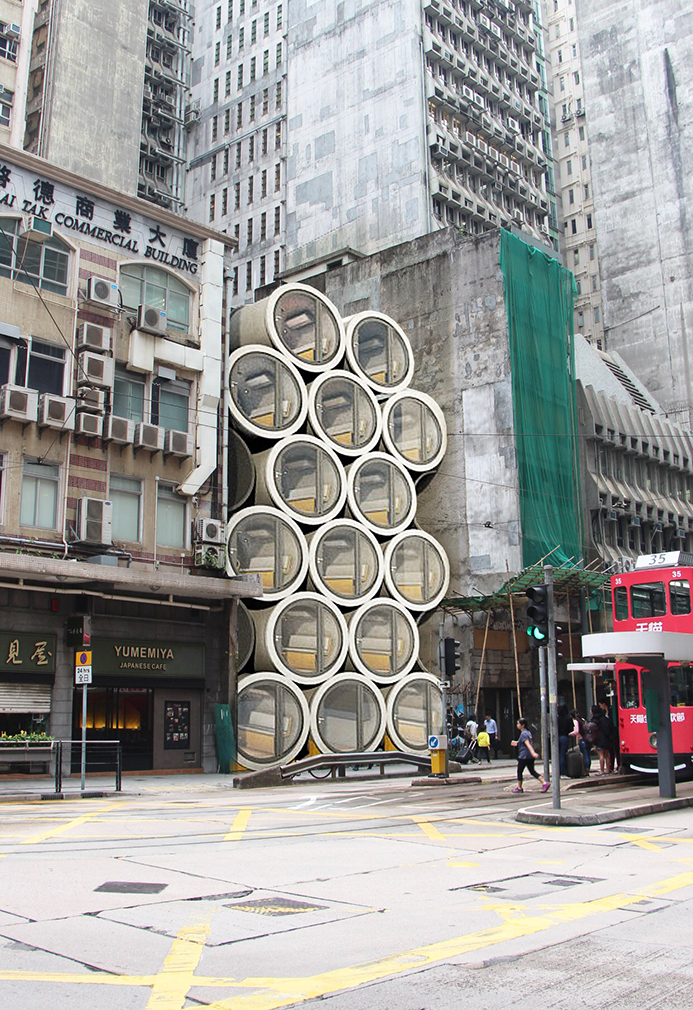
Courtesy James Law Cybertecture

Via James Law Cybertecture
Practice James Law Cybertecture has designed a controversial ‘solution’ to Hong Kong’s housing crisis which squeezes square-footage to the extreme…
Opods are 100-sq-ft tiny homes made from repurposed concrete water pipes. Measuring just 2.5-3 metres in diameter, the micro-apartments are designed to accommodate one or two people and cost just $15,000.
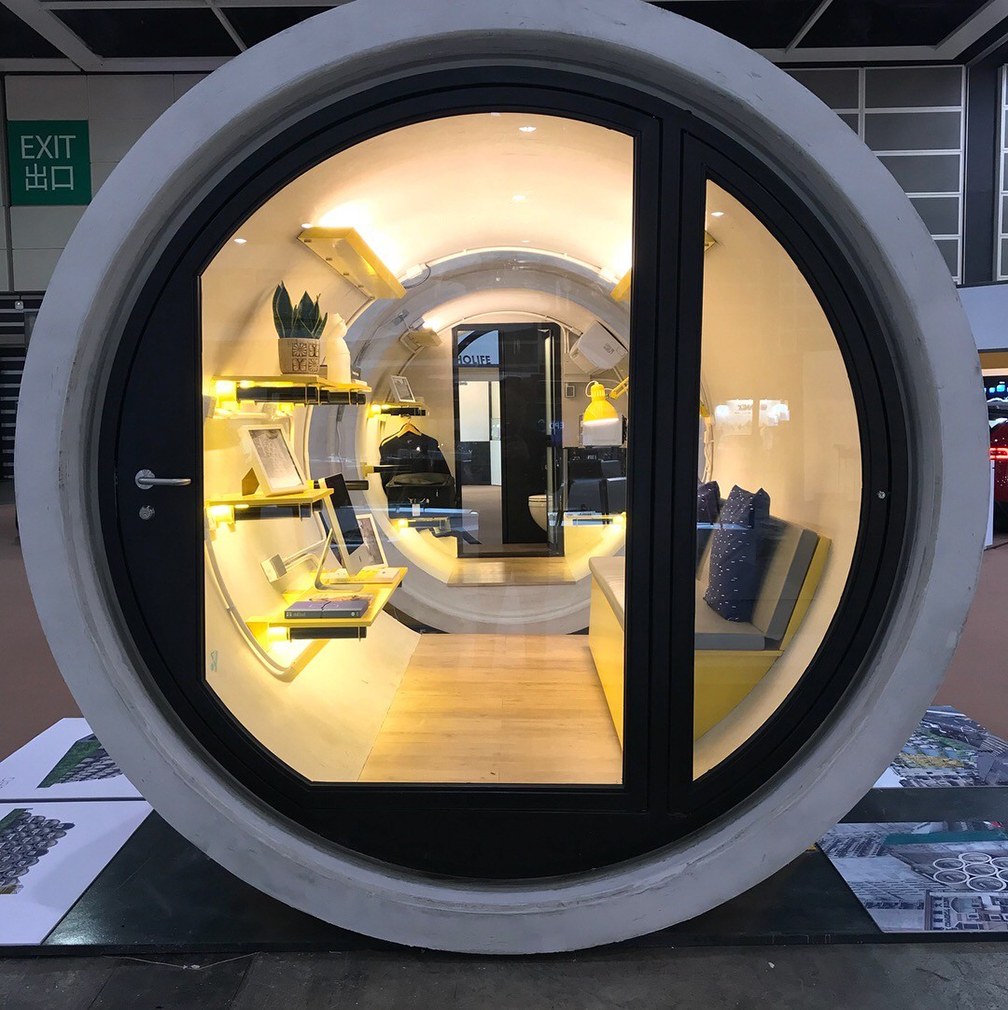
Practice principal, James Law told the South China Morning Post: ‘Because these components are already being mass manufactured, they are extremely low cost, well-engineered and, being concrete, these pipes have good insulation properties.’
Each tube home comprises a living room, bathroom with shower, and built in storage space for clothes and belongings. A bench in the living room folds into a bed, and the ‘kitchen’ comprises a mini fridge.
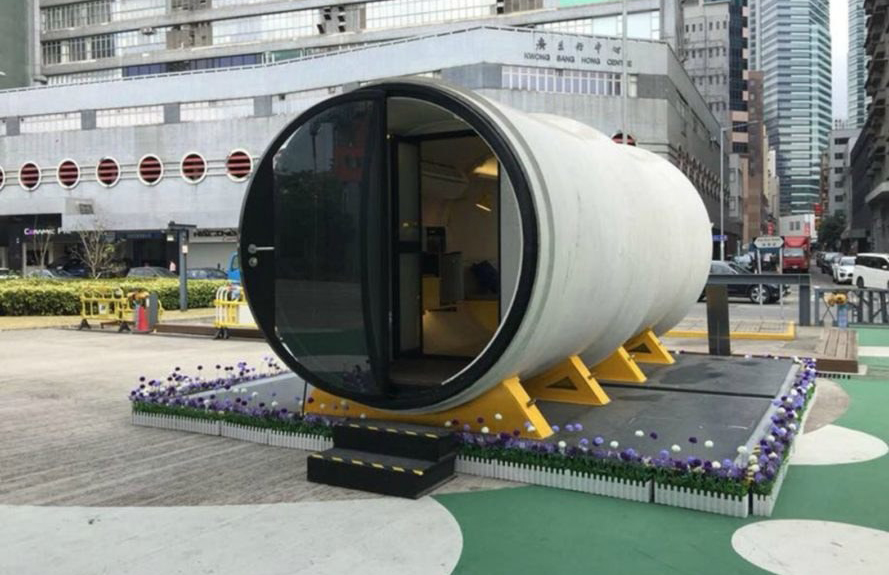
The practice says the tiny homes – which are currently in the prototype stage – could be installed in disused alleyways or stacked on designated sites as infill architecture.
Law adds: ‘Designed to go underground, [the concrete tubes] are also extremely strong and can be stacked on top of each other to immediately become a building, without having to build additional “bookcase” structures, columns and beams, etc [as is the case with shipping containers].’
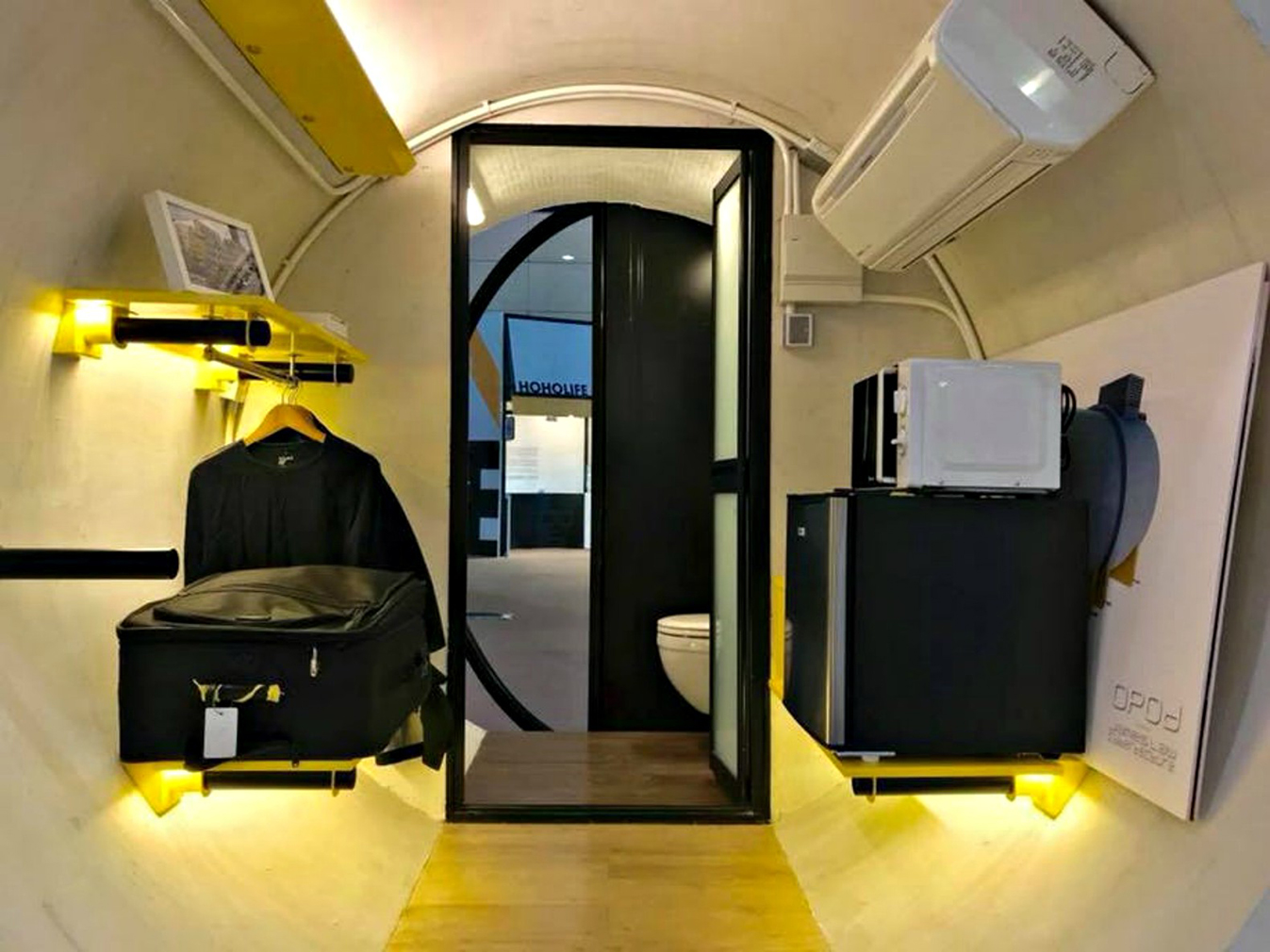
But haters gonna hate – and with valid reason. As CityMetric puts it: ‘Just because someone is young that doesn’t mean they should be happy to live in left-over industrial equipment.’
The Opod is designed for temporary living and doesn’t offer a long term fix for the the housing crisis gripping Hong Kong, where the average new home price is now over $1.8m. On a practical level, it also has no kitchen and weighs a colossal 22 tons.
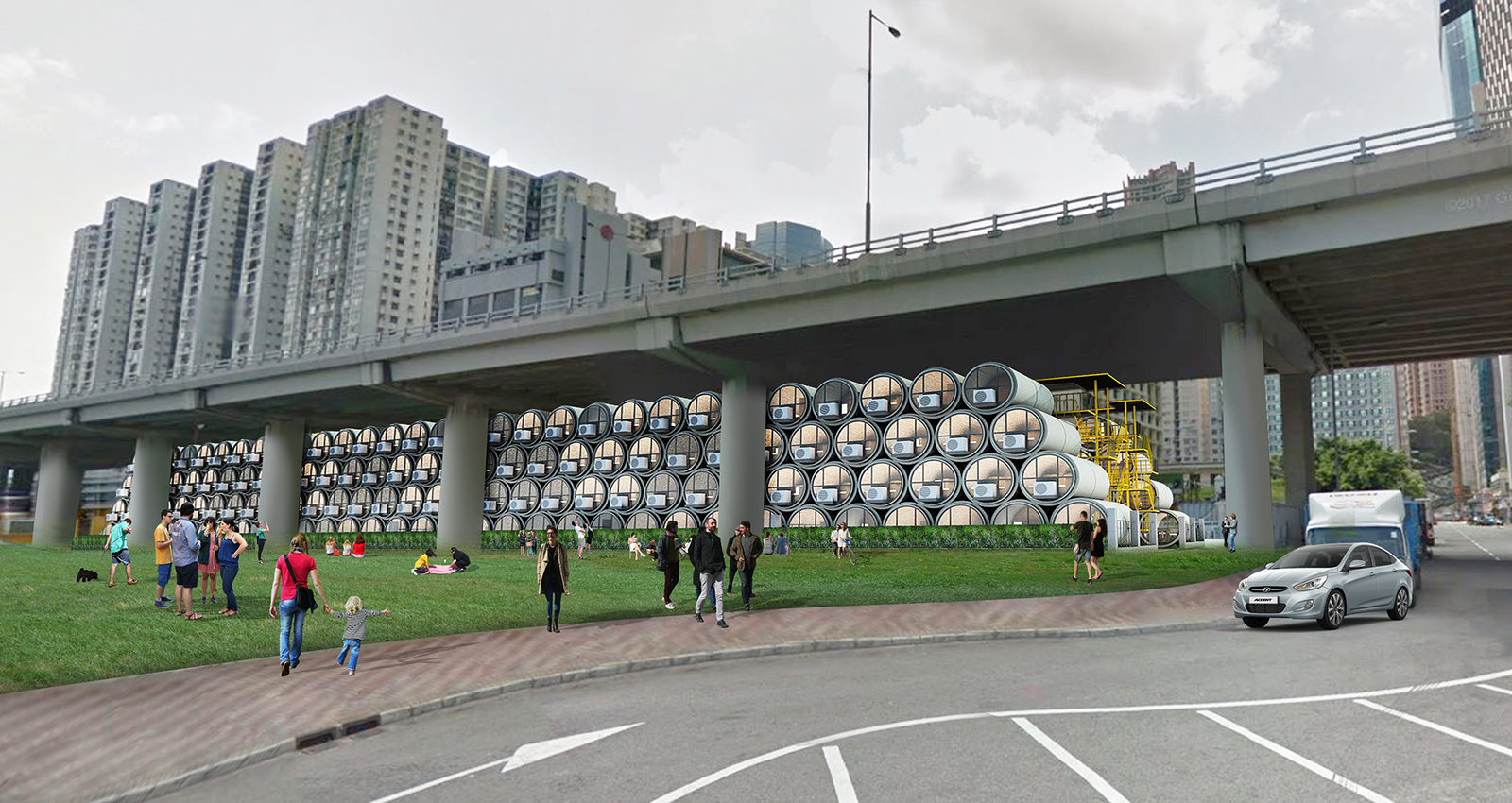
[Via Designboom h/t CityMetric & South China Morning Post]
Read next: Fernando Abellanas design a parasitic secret studio under a bridge in Spain
















